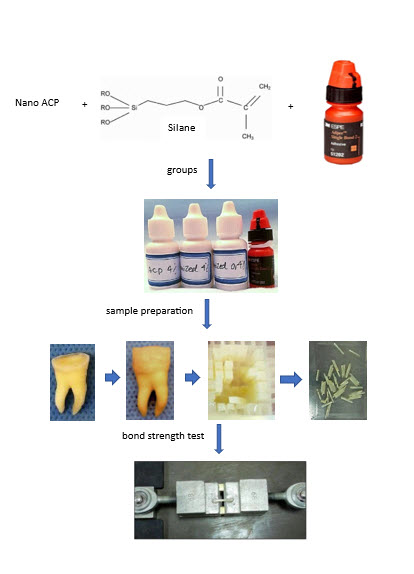Mon, Nov 11, 2024
[Archive]
Volume 20, Issue 3 (September 2023)
IJMSE 2023, 20(3): 1-10 |
Back to browse issues page
Download citation:
BibTeX | RIS | EndNote | Medlars | ProCite | Reference Manager | RefWorks
Send citation to:



BibTeX | RIS | EndNote | Medlars | ProCite | Reference Manager | RefWorks
Send citation to:
Hasanzade Salmasi A, Zarei M, Safarzadeh Khosroshahi S, Heidari S, Najafi F, Ghomayshi M et al . Effect of incorporation of amorphous calcium phosphate on bonding strength of a dental adhesive. IJMSE 2023; 20 (3) :1-10
URL: http://ijmse.iust.ac.ir/article-1-3203-en.html
URL: http://ijmse.iust.ac.ir/article-1-3203-en.html
Ali Hasanzade Salmasi 
 , Mahban Zarei
, Mahban Zarei 
 , Shadab Safarzadeh Khosroshahi
, Shadab Safarzadeh Khosroshahi 
 , Soolmaz Heidari
, Soolmaz Heidari 
 , Farhood Najafi
, Farhood Najafi 
 , Mojtaba Ghomayshi
, Mojtaba Ghomayshi 
 , Katayoun Lesani
, Katayoun Lesani 


 , Mahban Zarei
, Mahban Zarei 
 , Shadab Safarzadeh Khosroshahi
, Shadab Safarzadeh Khosroshahi 
 , Soolmaz Heidari
, Soolmaz Heidari 
 , Farhood Najafi
, Farhood Najafi 
 , Mojtaba Ghomayshi
, Mojtaba Ghomayshi 
 , Katayoun Lesani
, Katayoun Lesani 

Abstract: (5208 Views)
Amorphous calcium phosphate (ACP) which is a transient phase in natural bio-mineralization process has recently gained the spotlight. This study aimed to assess the effect of incorporation of nano-ACP (NACP) in a dental adhesive with/without surface treatment with silane coupling agent on bond strength. NACP was synthesized by the wet chemical precipitation technique. To characterize the structure of NACP, X-ray diffraction, scanning electron microscopy and energy dispersive X-ray spectroscopy were used. Forty molars were randomized into 4 groups of 10. The teeth were restored with composite resin and the bonding agent (one of the four groups). Adper Single Bond 2 was used as the control group. In 4wt% NACP group, NACP fillers were added to the bonding agent. In 0.4wt% and 4wt% SNACP groups, silanized NACP fillers were added to the bonding agent. Finally, the mode of failure of specimens was determined. Data were analyzed by one-way ANOVA and Tukey's post-hoc tests. P<0.05 was considered statistically significant. Addition of 4wt% non-silanized NACP decreased the bond strength compared with the control group (P<0.05). The bond strength of the groups with silanized fillers was not significantly different from that of the control group. Addition of silanized NACP to dental adhesive had no significant adverse effect on bond strength, which is a promising finding to pave the way for the synthesis of bonding agents containing bioactive fillers.
Type of Study: Research Paper |
Subject:
Biomaterials
Send email to the article author
| Rights and permissions | |
 |
This work is licensed under a Creative Commons Attribution-NonCommercial 4.0 International License. |





